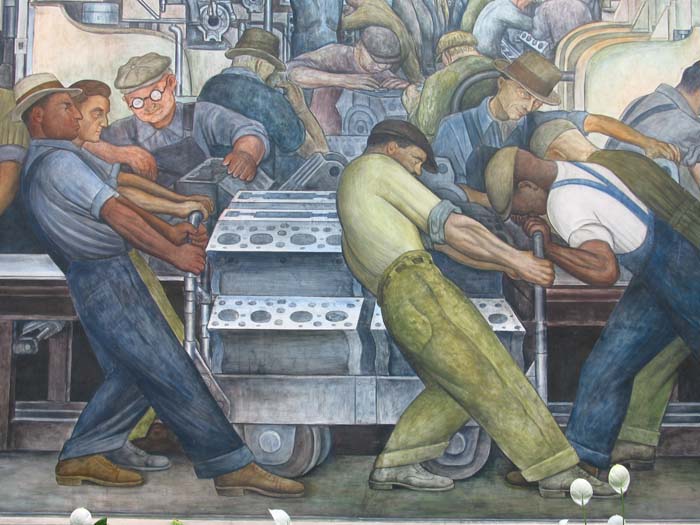In the 1960s, the United States was a
period of thought, analysis, and action for Mexican-descended
people. Issues of deep resonance within Mexican American communities
were brought forward by multiple socio-political
mobilizations throughout the country. Battles for self-determination
and cultural reclamation
combined into a national consciousness known as the "Chicano Movement."
Most Chicanos belonged to the working class, they upheld alternatives
of a generalized Mexican culture, and all had the experience of living
in the United States. They also were a mainly youth population working
and living throughout the Northwest, Midwest, and Southwest. United
by political activism and cultural pride, a significant element to the
Chicano Movement was the development of Chicano Art 1.
The
Chicano Art Movement, also termed as
"Chicano Renaissance," used art as part of the
struggle to achieve new and more credible human values 2.
Chicanos proclaimed their self invention within an inventive project
that connected visual artists, poets, musicians, and dancers to the
various political fronts of el
movimiento. By the mid-1970s, Chicano artists had become
producers of visual education. Posters and murals were also ubiquitous
purveyors of visual culture in Chicano communities 3.
Artists
pursued the vital tasks of
creating art
forms that strengthened the will, fortified the cultural identity, and
clarified the consciousness of the community 4.
Chicano
artists sought to demonstrate pride while empowering the community. The
foremost aesthetic
aim continued to be the search for an organic unity between actual
social
living and art 5. While the content and style
of the murals
and art forms were extremely varied, certain recurring themes did
develop. One such theme was the reclamation of a lost indigenous past.
It is in the return to the ceremonies, practices and ways of their
ancestors and the revival of these practices in complex and
oppositional contexts that give the Chicano people strength, healing,
direction and empowerment. This can be seen as a key element in the
evolution of Chicano political struggle and artistic development over
the past thirty years 6. Through the many art
forms, Chicanos have been
able to capture their people's history and visually represent their
people's struggles for better futures.
Supplemental
Resources about the Chicano Art/Movement and It's History:
http://www.chicanoart.org/dia05.html
http://www.sparcmurals.org/present/cmt/cmhistory.html
http://www.cr.nps.gov/history/online_books/5views/5views5e.htm
http://www.chicano-art-life.com/movement.html
http://www.fantasyarts.net/gronk.htm
http://www.brownpride.com/murals/default.asp
http://www.tsha.utexas.edu/handbook/online/articles/view/CC/kjc3.html
Resources specifically about Detroit Art:
http://www.insidesouthwest.com/
http://www.metrotimes.com/19/36/Features/StPainted.htm
http://www.dptv.org/ourfamilies/vargasmural.shtml
http://www.sparcmurals.org/present/cmt/cmhistory.html
http://www.cr.nps.gov/history/online_books/5views/5views5e.htm
http://www.chicano-art-life.com/movement.html
http://www.fantasyarts.net/gronk.htm
http://www.brownpride.com/murals/default.asp
http://www.tsha.utexas.edu/handbook/online/articles/view/CC/kjc3.html
Resources specifically about Detroit Art:
http://www.insidesouthwest.com/
http://www.metrotimes.com/19/36/Features/StPainted.htm
http://www.dptv.org/ourfamilies/vargasmural.shtml
 |
 |
 |
 |
 |



